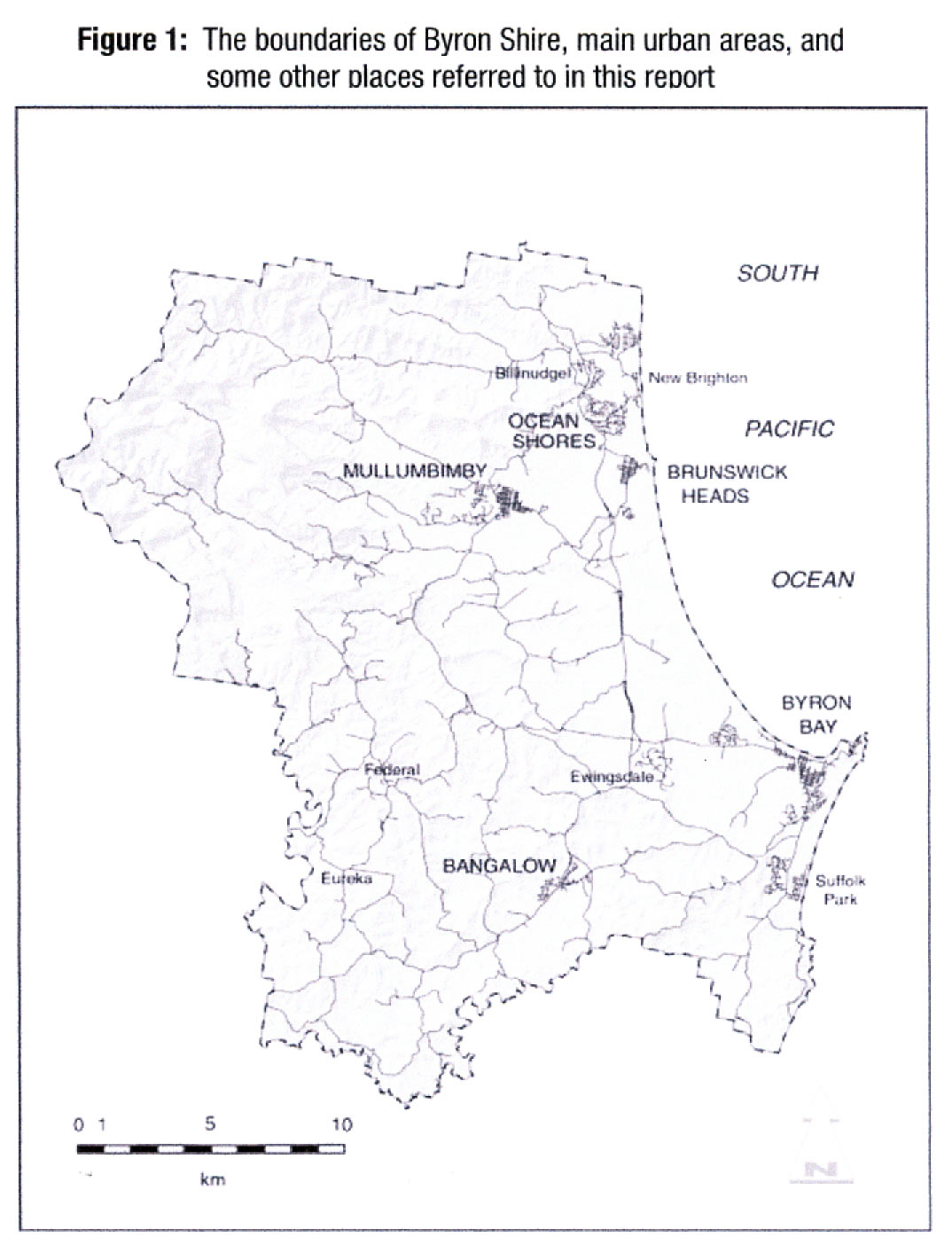A Brief History of Byron Shire.
3. Byron Shire is situated in far north-eastern New South Wales. lt comprises most of the catchment area of the Brunswick River and part of the Richmond River. lt adjoins the Shires of Tweed (to the north) and Ballina (south), and the City of Lismore (west). The Shire is bounded in the east by the South Pacific Ocean, in the south partly by Skinners Creek and Wilsons River, in the southwest partly by Coopers Creek, and in the nofthwest partly by the Nightcap Range (Figure 1). The area of the Shire is 567 square kilometres.
Figure 1: The boundaries of Byron Shire, main urban areas, and some olher olaces referred to in this report

The Shire was proclaimed, and its initial boundary described in detail, in the NSW Government Gazette of 7 March 1906. lt was a creation of the Local Government (Shires) Act 1905, under which the whole of New South Wales, exclusive of the Western Division, the City of Sydney, and existing municipalities was divided into shires.
Byron Shire had an estimated resident population oÍ 32 378 in June 2010, growing at approximately 1.5% per year. lts major urban areas are Byron Bay (with its satellites Suffolk Park and Ewingsdale); Brunswick Heads; Mullumbimby; Billinudgel/ New Brighton/ Ocean Shores; and Bangalow (Figure 1). Mullumbimby was incorporated as a separate municipality in 1908 and for the next seven decades was administered independently of Byron Shire. The Council of the Municipality of Mullumbimby was dissolved in October 1980, and its 1.7 square miles of tenitory reunited with the surrounding Byron Shire.
It is acknowledged that Byron Shire contains a wealth of Aboriginal cultural sites which include middens, stone arrangements, rock shelters, and tool-making sites. Additionally, many Aboriginal words have survived in the names of places within the Shire (e.9. Mullumbimby and Billinudgel). These all testify to the long period of occupation of this area by Aboriginal people prior to the arrival of the first explorers, surveyors and settlers of European origin.
Further discussion of the history of the Byron Shire is available in 'Thematic History', which was written by Brett J. Stubbs to support the Byron Shire Community-based Heritage Study in November 20063.
'"The History of Byron" is an extract lrom Byron Shire, Thematic History Aprit 2006 (pp 1 - 3),by Brett J Stubbs, which forms part of the Byron Shire Heritage Study undertaken by Byron Shire Counci . The population figure is adjusted from Mr Stubbs' original text based on the latest available ABS Regional Population Estimates by Local Govemment Area.